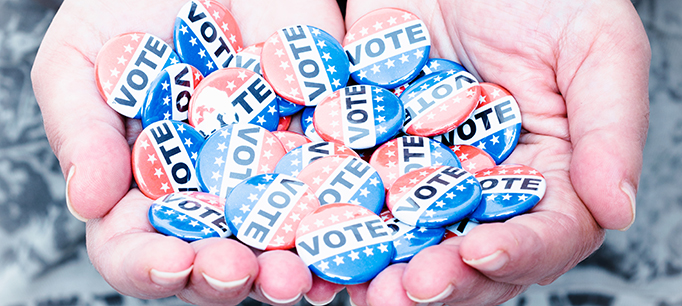
Californians who vote tend to be older, white, college educated, affluent, and homeowners. When asked to choose, these “likely voters” identify themselves as “haves” rather than “have nots.” Nonvoters tend to be younger, Latino, less likely to be college educated and less affluent than likely voters, and renters; they generally identify with the have nots.
This divide has particular significance in California, where voters make important policy decisions through the initiative process—and at a time when economic inequality is a major theme, according to Mark Baldassare, author of a new report, California’s Exclusive Electorate: Who Votes and Why It Matters. Baldassare is PPIC president, CEO, and director of the PPIC Statewide Survey. He presented an overview of his report before a Sacramento audience this week.
The report concludes that, in addition to electoral process reforms that will make voting easier, broader changes are needed to expand the electorate. Among them: citizenship drives to engage foreign-born residents, increased economic mobility, and changes in federal immigration policies.
An expert panel took up these issues in a discussion moderated by John Myers, Sacramento bureau chief of the Los Angeles Times. Myers asked if there a ’secret sauce’ to motivate people to vote.”
Mindy Romero, founder and director of the California Civic Engagement Project at UC Davis, said that there’s no single solution. But civics education is important, she said, and so is targeted outreach that recognizes the unique experiences and needs of underrepresented groups.
Matthew Harper, state assembly member, used his involvement in Junior State to illustrate the importance of nonprofit organizations in showing young people how they can affect government.
Ben Allen, state senator, noted the shrinking number of reporters in Sacramento and said that more engaged media coverage would help bring issues home to voters.
Myers pointed out the vicious cycle at work in many elections. Campaigns spend their resources targeting the relatively small pool of likely voters, who will reliably turn out to support them. A much broader group of potential voters is not engaged and—as expected—this group fails to vote.
But, Allen said, in this presidential election we could be seeing the flip side of the low-turnout election that draws only the most involved voters. “Donald Trump and Bernie Sanders are driving new people to the polls that folks have not traditionally reached out to and engaged with,” he said. This presents “a scary but exciting set of possibilities” for reaching out to new sections of the electorate.


